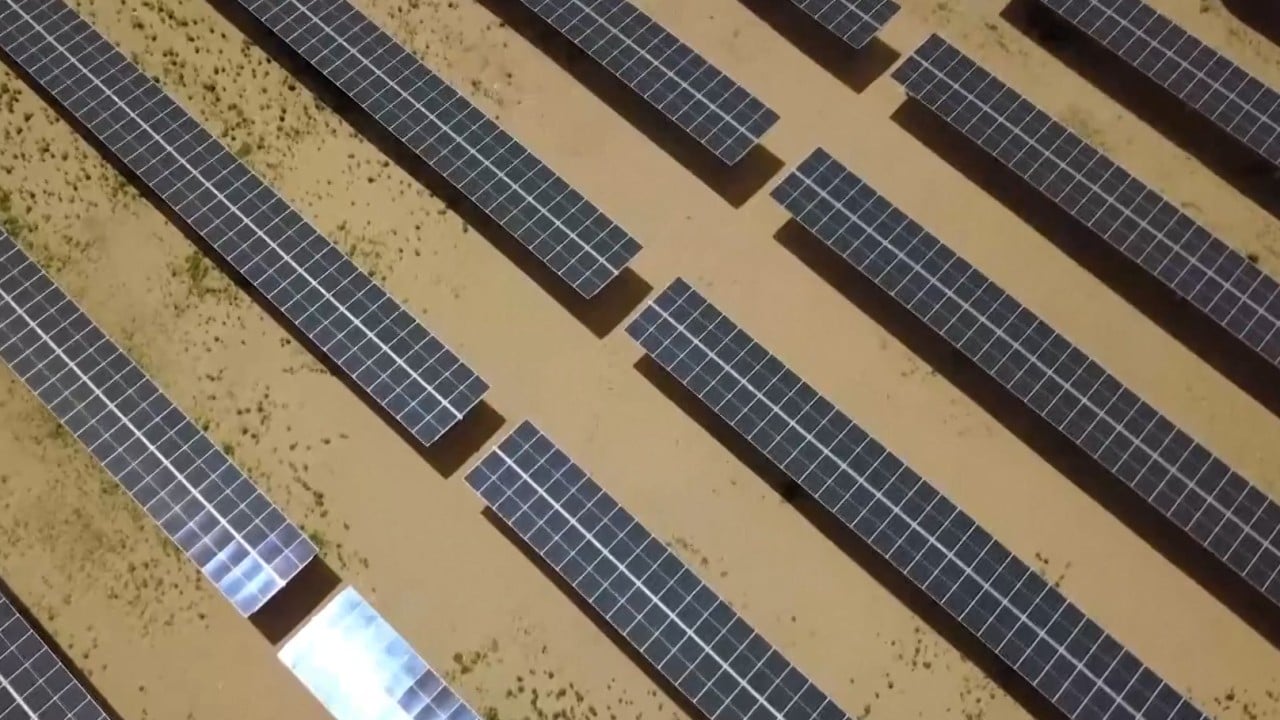
In China, world’s largest hybrid solar-hydro plant produces electricity on Tibetan Plateau
- Kela plant in Sichuan is part of a huge renewable production base planned by the Chinese government to generate clean energy for 100 million households
- This technology solves the safe connection of solar power with the grid and prevents wastage, addressing solar power’s inherent dependence on the weather

The Kela solar-hydro power plant is on a mountain in Yajiang county, Ganzi prefecture, Sichuan – 4,600 metres (15,000 feet) above sea level and 1,000 metres higher than Lhasa, the highest city in the world – making it the highest-altitude project of its type in the world.
The electricity generated by the solar power station is first transported through power lines to the Lianghekou Hydropower Station 50km (31 miles) away. Then the power generated by the solar and hydro stations are combined and fed into the grid.
This design helps balance fluctuations in solar power, which generates more electricity during the day and less at night and more on sunny days than on cloudy days.
It also allows the system to adapt power generation over a longer period, letting solar power generate more during dry seasons and greater hydro power output in rainy seasons.
This technology solves the safe connection of solar power with the grid and prevents wastage, addressing solar power’s inherent dependence on the weather.
“It serves as a good example for large-scale centralised development of clean energy in the world,” state news agency Xinhua reported.
The Kela plant is the first gigawatt-level hybrid station in the world. Previously, the largest hybrid station – with a capacity of 850,000kW – was in Qinghai province’s Longyang Gorge.
It is the first phase of the clean energy demonstration project in the Yalong River basin. The whole project had already met a 20GW capacity and was expected to reach about 50GW by 2030, state media reported.
“When the clean energy project is fully built, it will have a total capacity exceeding 100GW, producing approximately 300 billion kilowatt-hours annually, enough for 100 million households,” the Xinhua report said.
The Kela solar power station is significant in both scale and construction complexity.
There are 52,700 steel stakes supporting the solar panels that if connected end-to-end would stretch over more than 1,400km (870 miles). The steel used for the solar panel bracket weighs nearly 50,000 tonnes, enough to build another “Bird’s Nest” National Stadium in Beijing.

The station covers an area of over 16 sq km (6.2 square miles), comprises more than 2 million solar panels and its 1GW power output can fully charge 15,000 electric vehicles with a 550km range in one hour.
Because the power station site is in the high-altitude plateau of western Sichuan – 4,000 to 4,600 metres above sea level – construction workers faced extreme cold weather.
At that altitude, construction is only possible for less than half the year. At the most hurried time of construction, workers had to install 7,000 support bases, 1,200 solar panel brackets, 33,000 solar panels and 30 box transformers within 24 hours.
“Currently, the clean electricity produced by the station annually can satisfy the electricity demands of about 700,000 average households. It saves over 600,000 tonnes of standard coal annually, reducing carbon dioxide emissions by over 1.6 million tonnes,” Kela station project manager Yang Zhiwei told CCTV.


